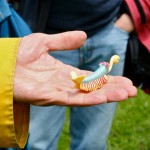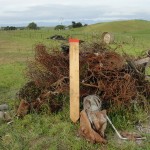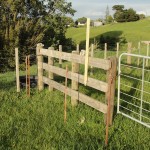This day was spent as a reflection on connections between energy and adaptation, with House of Wonder having the great honor of hosting a wide variety of perspectives and knowledgeable guests. Geologists, Physicists, Philosophers, Ecologists, Astronomers, Artists, local people and all were invited and joined for A Walk Through Deep Time – a short walk on the farm property through the deep time of the earth’s formation, to discuss the energy exchanges involved in developing from a violent nascent planet, to one with abundant complex life.
Event Participants:
Hamish Campbell, Geologist
Hugh Morgan, Microbiologist and Thermophile researcher
Keith Thompson, Ecologist
Thomas Everth, Physicist, Programmer
Mike Dickison, Evolutionary Biologist
Alistair Brickell, Geologist and Amateur Astronomer
Ruth Irwin, Philosopher
Sue Gallagher, Art & Design Lecturer, Artist
Janine Randerson, Art & Design Lecturer, Artist
Jo Tito, Art & Design Lecturer, Artist
Jono Clark, Ecoquest
Frances Karl, Science Teacher, Hauraki Plains College
Bruce Miller, Engineer
Nelle Rose, Hive Taranaki Environment Centre
Adela Christiansen, Local Artist
Trudy Lane. The Keeper
Joy Geary & Partner, Findlay Family Researcher
I had gathered people according to their knowledge areas perspectives on this, and so during introductions, I was interested and surprised to hear in the introductions a recurrence of participants calling for a redevelopment of the economic system to be based on units of energy rather than money, as a more realistic relationship to the overall systems of life. It was a shame that an artist friend influential in the development of the topical focus, Julian Priest, was at the last moment unable to join, as his input here would have been a further addition to this overlap. Others spoke of their own connection to ideas of energy, such as the philosopher Ruth Irwin’s study of modernity, and artist Jo Tito’s speaking of her sense of the mauri or energy of life.
The installation for the walk itself I had kept minimal so to be able to focus on bringing out the thoughts and knowledges of those present. Existing farm structures, landforms and detritus were explored for their serendipity, along with typographically developed time marker posts, as a way to outline these scientific concepts, while grounding it in everyday experience.
We got away on the walk, and after a few initial shoulder-taps, the joint walk became a free-flowing feast of concepts within the various threads of related scientific research, and inquisitive questions.
As such worldview-forming stories are inherent in this timescale, such as the origins of life and similar ‘where do we come from, where are we going’ questions, I wanted to spend some focused time on these areas.
To get things rolling, geologist/paleontologist Hamish Campbell first gave us a background to the work behind forming the New Zealand geological timeline. Physicist Thomas Everth, then gave us a picture of the grand formation of the planet via the slow gravitational pull of vast tracts of stellar dust and detritus together, to become the accumulated molten ball of kinetic energy at the core of our planet. This stellar dust is thus the molecular basis for all life, and this core our continuing source of geothermal energy. I then tapped the shoulder of Hugh Morgan who is a molecular biologist who studies thermophiles – the bacteria capable of living in extremely hot temperatures, and a prime candidate to be one the first forms of life on Earth. Hugh proceeded to discuss this amazing moment of life emergence, which appears to have occurred extremely early, then was repeatedly destroyed and would resurge, on what was an extremely hostile environment for life. Hugh’s tour of tour duty stretched for many a billion year into the walk – two in fact – as once evolved, these thermophiles remained, and remain today almost exactly has they first formed, as their environments have never changed. Big marker points after that for Hugh was going from singular to multiple cellular life, which was about where he ducked out, as, as he put it, ‘it all gets much more concrete from here’.
- Geologist Alistair Brickell shares his wonder at the ancient creatures found at the Burgess Shales site.
- Te Taiao Māori , Dr Te Huirangi Waikerepuru
One participant, the geologist and amateur astronomer Alistair Brickell, would later become known as ‘the man with the world in his pockets’, as throughout the walk he brought out various wondrous objects – a meteorite that was older than the earth, a diagram of an early bacterial life form, small models of creatures from a significant archeological record. These then formed another bridge between remote geologic time and the here and now, as did the soak in the local geothermal springs that followed the discussion.
The conversational, open-ended process of walking and talking together outdoors (despite the wind!) allowed for a wider conversation to occur, such as with thoughts from the Māori artist Jo Tito and philosopher Ruth Irwin which challenged the ‘arrow of time’ account of reality. Jo also curiously commented on how water/wai was present and flowing throughout this largely scientific account of the timeline. However in overview, on the day there was an unintentional imbalance towards the scientific due to unforeseen circumstances for three further people who were part of the intended ‘cultural’ entourage. However this is very much part and parcel of working socially, and it also made it clear how I needed to further develop ways to draw out the cultural in preparation for such eventualities. Also to think again about the ‘arrow of time’ base format of a walk which follows a continuous line.
In the Energy & Adaptation event, I had sought to focus on the interrelation between forms of energy and life, and how this might relate to philosophical and cultural ideas. Philosophical ideas such as Ilya Prigogine drew out from the non-linear thermodynamic studies of these relationships. This was somewhat discussed, despite some missing bodies (Julian Priest!), but as we’d gotten so excited about earlier discussions, we all but ran out of time and in-stomach food reserves for an in-depth discussion on this area. Hence the oddly tiny measure for human civilization became a brief discussion, which could be returned to.
Another under-discussed area I would like to explore in future, are the related cultural ideas such as cosmological whakapapa (geneology) in matauranga Māori (Māori knowledge), and similar ideas found in ‘integrated’ worldviews. This whakapapa acts as a representation of geneaological interrelations from humans to all forms of life and forces in the world, going beyond the familial and human, to the stars and the great void of Te kore. Here the research of Dr Charles Ahukaramu Royal into cosmological whakapapa and Te Ao Mārama[1] (the Māori world view) has been invaluable, as has the work of Intercreate collaborator Dr Te Huirangi Waikerepuru.[2] I am interested here also in what the philosopher Ruth Irwin links back to a ‘perceptive attunement’ (Gelassenheit) which she states as, ‘precisely what is missing from philosophical discourse about the relation between contemporary human beings and the environment’ (Irwin 2008, Pg 187).
As the project continues, there are many ideas for how to develop a flexibility of form which might allow for more expanded readings of the walk. Possible approaches have emerged from the participants themselves. November participant Hugh Morgan, states that ‘molecular biology now allows us to put a timeline on biology rather than biology being placed on a timeline’. This provides a more complex and serendipitous view, rather than a linear progression that can too easily be interpreted as an inevitable line that culminates in hominids. Combining this with cultural perspectives, I am interested for the project to be developed in such a way as the participants themselves negotiate on or influence the form of the walk and therefore the readings possible.











